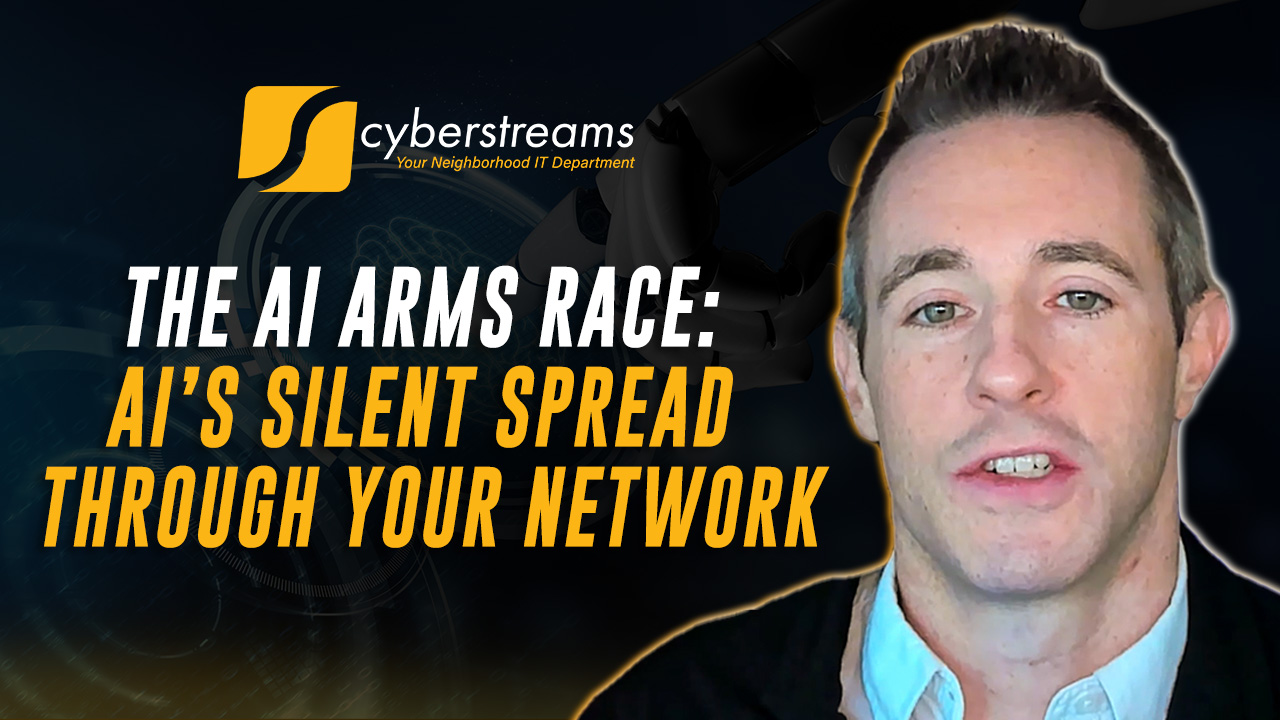
The AI Arms Race: AI’s Silent Spread Through Your Network
The digital world is vast, and with its complexities comes the ever-present threat of cybercrime. Ransomware attacks, in particular, have evolved beyond the simple encryption of files. In fact, they now involve sophisticated strategies, and AI is playing a pivotal role in both aiding attackers and defending networks. The phase we’re diving into today is the fourth stage of the modified kill chain: Lateral Movement. At this point, the attackers have already infiltrated your network and are now moving through it, searching for higher privileges and valuable data. In this blog, we’ll explore how AI plays a dual role, benefiting both attackers and defenders, and what you can do to fortify your network.
What is Lateral Movement?
Once the ransomware has breached your defenses, it’s not enough for attackers to simply lock up your files. In the lateral movement phase, they will spread across your network, searching for ways to escalate their privileges, find high-value data, and set themselves up for a full-blown exfiltration. Attackers leverage tools like PowerShell, stolen credentials, and vulnerabilities in your systems to move undetected from one machine to another, often with the aim of accessing domain controllers or backup systems. According to a 2024 Sophos report, 54% of ransomware attacks involve lateral movement, often focusing on critical assets like domain controllers.
The Role of AI in the Attack
At this stage of the attack, attackers are no longer just relying on traditional methods. AI enters the picture as a powerful tool for cybercriminals. Think of it as their "navigation app" within your network. AI algorithms can quickly map your infrastructure, identify high-value targets such as customer databases or executive laptops, and optimize the attack strategy for maximum impact. Graph-based algorithms, often used by sophisticated ransomware groups like LockBit, can prioritize key assets, allowing attackers to cut through the noise and focus their efforts on what’s most valuable.
AI is also used to speed up the double-extortion process. Before encrypting your files, attackers can use AI to pinpoint and exfiltrate sensitive data like customer records. This efficient use of AI significantly reduces the time between breach and ransom demand, turning what once took days into a matter of hours. In essence, AI equips attackers with a ruthless, highly effective toolkit for compromising your network faster and more efficiently than ever before.
AI: The Defender’s Secret Weapon
While AI enhances the capabilities of attackers, it also gives defenders powerful tools to fight back. Security systems like Microsoft Defender are leveraging machine learning and AI to detect unusual patterns of behavior within the network. For example, if an unexpected PC starts communicating with your server room, AI can flag this anomaly in real-time. The system might also track privilege escalation attempts or lateral movement, alerting defenders before the attackers spread too far.
AI is also used to simulate potential attack paths, helping organizations proactively identify weak spots in their network. These AI-driven simulations can highlight vulnerabilities, allowing you to harden your defenses before an attack even happens. Imagine AI acting as a vigilant security camera, spotting suspicious activity and sounding the alarm the moment an attacker sneaks past the perimeter defenses.
How to Protect Yourself: Takeaways and Next Steps
So, how can you defend against AI-powered attacks while also using AI to safeguard your network? Here are three key takeaways and actionable next steps:
1. Segment the Field of Play
Network segmentation is a time-tested defense strategy, and when combined with the modern approach of Zero Trust, it becomes even more effective. By ensuring that no user or device has unrestricted access to your entire network, you limit the scope of an attacker’s lateral movement. If attackers can’t freely roam your network, they’re confined to a small corner, making it harder for them to escalate privileges or exfiltrate data.
2. Guard the Keys
AI tools can be used to monitor privilege usage across your network. A user account, such as that of a janitor or a low-level employee, should not have access to sensitive data or high-level systems like the CEO’s files. Using AI, you can spot when privilege levels are abused or when users deviate from their usual activities. Catching this early can prevent attackers from escalating their access undetected.
3. Set the Trap
Deploy AI-driven tools to detect suspicious traffic or unusual activity. For instance, if a workstation that typically communicates with one set of servers suddenly tries to access a different one, it could be a sign of lateral movement. Similarly, if an employee’s mailbox starts creating new email rules or accessing data it normally doesn’t, AI can raise a red flag. By identifying these anomalies early, you can stop the attack before it spreads further.
Conclusion: The Arms Race Continues
As we move further into the age of digital transformation, the arms race between cybercriminals and cybersecurity professionals is intensifying. AI plays a dual role in this battle: while it empowers attackers to move faster and more effectively through your network, it also provides defenders with the tools to detect and respond to threats swiftly. The key to staying ahead in this race lies in adopting AI-driven security solutions, actively monitoring for anomalies, and reinforcing your defenses with strategies like network segmentation and Zero Trust.
In this ever-evolving digital landscape, it's not just about defending your network anymore—it's about outsmarting and outpacing attackers at their own game. By using AI to anticipate their moves and fortify your infrastructure, you can ensure that when the inevitable breach happens, you're ready to stop it before it turns into a full-scale disaster. Stay tuned as we dive deeper into the next phase: Data Exfiltration, where the real ransom game begins.
Ready For A No-Nonsense Approach To IT?
Hire us to set your IT strategy up for sustainable success.
Learn about our proven No-Nonsense approach.
Get an IT roadmap designed specifically for you.
Fearlessly grow your business.


